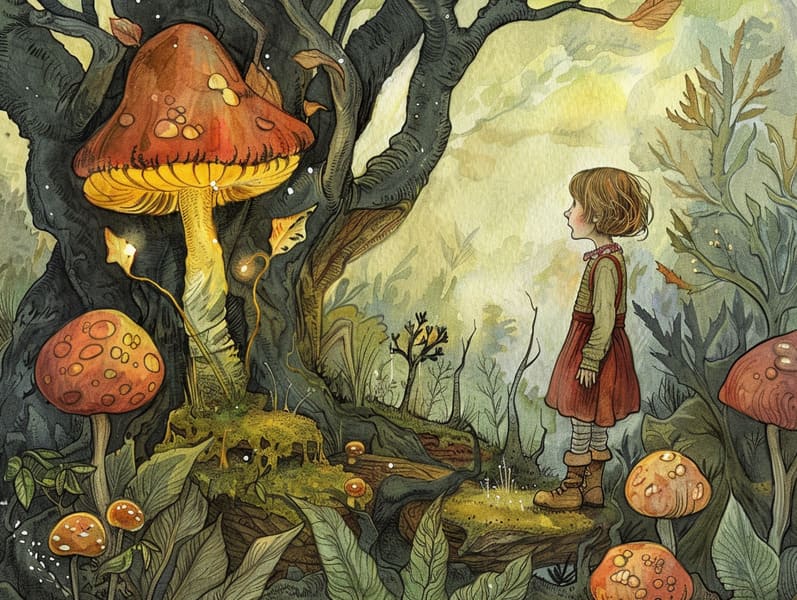The Dawn of Children's Fairy Tales and Its Perpetual Splendor.
The Dawn of Children's Fairy Tales and Its Perpetual Splendor.
Blog Article

Old fairy tales have long histories. These narratives have been passed down from one generation to the next well before they were ever inscribed. They came from a variety of civilizations, including Western traditions. They were initially passed along among older generations, often carrying themes and messages relevant to the societal norms and beliefs of the time.
The Grimm brothers, the two Grimm brothers, were among the first to assemble many of these beloved tales. Their collection, "Grimm's Fables," included stories like "The Story of Cinderella," "Hansel and Gretel," and "Snow White," which have since become essentials in the world of iconic fairy tales. Similarly, Hans Andersen's enchanting tales, such as "The Sea Maid," and "The Ugly Duckling," have captivated hearts worldwide, guaranteeing their place in the pantheon of treasured fairy tales.
Despite their ancient origins, fairy tales remain as meaningful as ever, especially as bedtime stories for kids. These magical stories are now available in diverse formats, including artistically illustrated books, whimsical animations, and digital storybooks.
Their unwavering allure can be linked to several magical reasons:
Moral Lessons: Timeless fairy tales often whisper important moral lessons. Narratives like "The Tale of the Boy Who Cried Wolf" teach the benefit of integrity, while "The Tortoise and the Hare" stress the values of resolve and humbleness. These stories offer children clear distinctions between virtue and vice, building their moral compass in a gentle yet lasting way.
Empathy and Awareness: Ancient fairy tales frequently showcase heroines facing difficulties and adversities, provoking audiences to resonate with their struggles and encourage their triumphs. For instance, "Beauty's Beast" illustrates the benefit of seeing beyond looks to comprehend the true essence of a person, encouraging understanding and discernment.
Cultural Knowledge: Many classic fairy tales are imbued with the cultural contexts from which they emerged. Understanding these stories can provide intriguing perspectives into different historical contexts, developing a sense of cultural appreciation and acknowledgment.
Inventiveness and Imagination: The imaginative elements in fairy tales—wizardry and magic—engender children’s fantasies. These tales lead readers to otherworldly realms, provoking imaginative ideas and a sense of excitement that stays a lifetime.
Traditional fairy tales are not only fantastical but also instructive. They provide delightful tools in cultivating various mind and heart abilities in young readers. When classic fairy tales are read aloud, they advance linguistic abilities by bringing new lexicon and elaborate sentence structures. This practice also promotes hearing perception and attention, as kids focus on every detail, anticipating to see what happens next.
Furthermore, contemplating the themes and characters of classic fairy tales can foster cognitive skills and analytical skills. Children learn to recognize patterns, predict happenings, and catch on to cause and effect. These reflections also boost children voice their thoughts and feelings, adding to their emotional intelligence.
In today’s high-tech era, the availability of internet fairy tales has made these tales more reachable than ever. Digital sites and programs present ample collections of traditional fairy tales that can be viewed or listened via anytime, anywhere. Fairy tales recited are particularly well-liked, featuring an interactive way for kids to experience these entrancing tales. Narrated books and read-to-me videos bring characters and settings to life, often augmented by spellbinding melodies and songs that augment the tale-telling adventure.
The everlasting appeal of timeless fairy tales lies in their ability to shift to modern days while holding onto their basic principles. Contemporary retellings of these tales often show more different protagonists and modern settings, making them accessible to today’s audience. However, the fundamental themes of bravery, understanding, and justice remain unchanged, continuing to resonate with audiences of all ages.
Classic fairy tales also offer a sense of ease and familiarity. They provide a ordered narrative with a transparent beginning, middle, and end, often winding up with the resolution of conflicts and the triumph of virtue over vice. This assuredness can be soothing for little ones, allowing a sense of dependability in an always shifting world.
Timeless fairy tales continue to mesmerize and educate new generations, maintaining their delight and relevance in modern society. As children's night stories, they bequeath click here a perfect blend of enchantment and education, fostering moral values, empathy, and creativity. The abundance of internet fairy tales and the well-received status of fairy tales recited ensure that these old stories remain available to new generations.
By perpetuating and narrating these stories, we continue to exalt the rich tapestry of tradition and cultural heritage. Whether you are experiencing a vividly illustrated book, enjoying a cyber collection, or listening via an audio story, the captivation of classic fairy tales is always within reach. These fairy tales highlight of the perpetual presence of storytelling and its ability to bond us across generations and cultures.
No matter if you are exploring a gorgeously illustrated book, accessing a electronic library, or playing an voice book, the splendor of old fairy tales is always within reach.
These stories highlight of the continued power of tales and its ability to hold us together across time and space, forging a link that fascinates and enlightens alike.